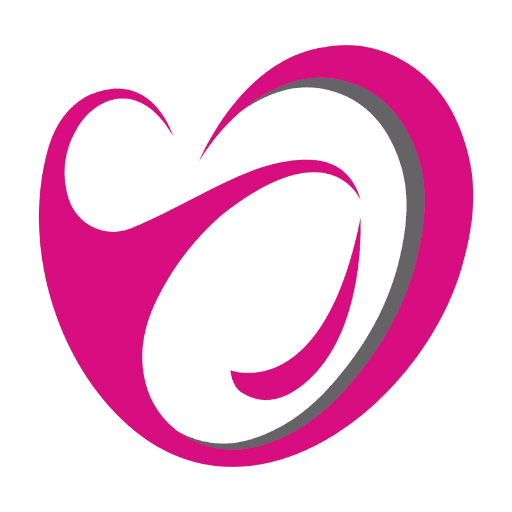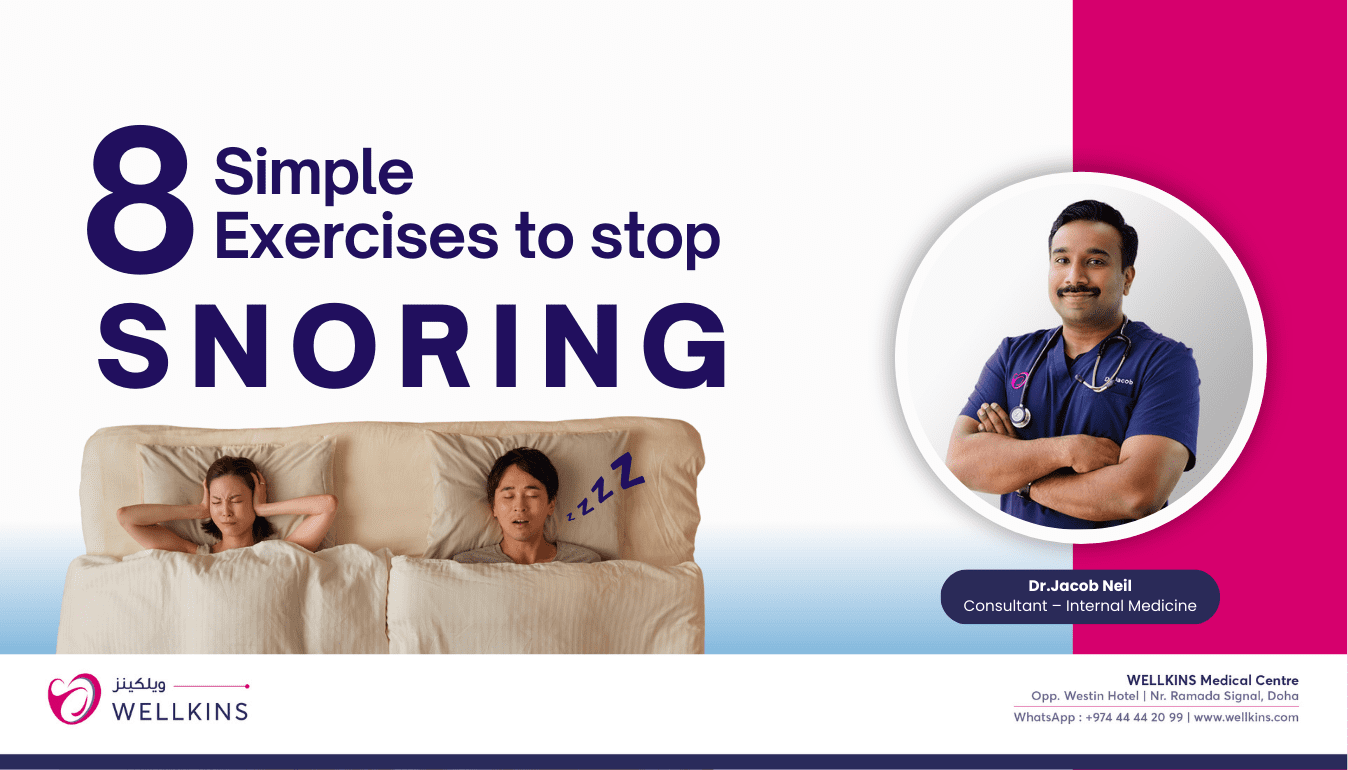Author: Dr.Jacob Neil (Consultant Internal Medicine – WELLKINS Medical Centre)
People with obstructive sleep apnea (OSA) often breathe through their mouths during sleep, and have throat muscles and a tongue that are more relaxed during sleep. This causes a collapse of the airway, resulting in the effect of being repeatedly choked throughout the night.
Understanding Snoring
Snoring occurs when the soft tissues at the back of the throat relax and vibrate as air passes through. This can lead to a variety of unpleasant sounds, from gentle snores to loud, raspy noises.
Perfoming myofunctional therapy exercises can help to increase the tone and strength of the upper airway muscles, thereby reducing the collapse of the upper airway during sleep.
Dr.JACOB NEIL (Consultant – Internal Medicine at WELLKINS Medical Centre)
In addition, doing nasal breathing exercises can reduce mouth breathing during sleep which can help stabilise the upper airway in some patients during sleep.
8 Simple exercises to stop snoring
One set of these exercises takes about 5mins to complete. It is recommended to perform two sets per session (10mins total), at least twice daily. You should also practice these exercises in front of a mirror to ensure that you are doing them properly.
1. Tongue slide
Purpose: Strengthens your tongue and throat muscles.
How to do: Press the tip of your tongue on your top front teeth. Slowly slide your tongue backwards. Repeat 5 times.
2. Tongue stretch
Purpose: Increases the tone and strength of your tongue
How to do: Stick out your tongue as far as you can. Try to touch your chin with your tongue while looking at the ceiling. Hold for 10 – 15 seconds and increase the duration gradually. Repeat 5 times.
3. Gum chewing
Purpose of this exercise: Strengthens your throat and jaw muscles and helps to widen your airway.
How to do: With your mouth closed, go through the motion of chewing, as if you are chewing a piece of gum. Whilst chewing, make an ‘mmmm’ sound. Do this for 10 seconds. Repeat this exercise 5 times.
4. Tongue forces
Purpose of this exercise: Improves the tone and strength of your tongue and soft palate.
How to do:
Step 1: Suck your tongue upward against the roof of your mouth and press your entire tongue against it. Hold this position for 10 seconds. Repeat this 5 times.
Step 2: In the opposite direction, force your tongue down, until your whole tongue is resting on the floor of your mouth. Ensure the tip of your tongue is touching the back of your lower teeth. Hold this position for 10 seconds. Repeat 5 times.
5. Tongue clench
Purpose of this exercise: Strengthens your tongue and throat muscles.
How to do: Hold your tongue gently in between your lower and upper front teeth. Do not bite too hard on your tongue to avoid causing injury. Whilst holding your tongue in between your teeth, perform 5 swallows. Repeat 5 times.
6. Finger in cheek
Purpose of this exercise: Assists in better closure of the mouth and improves nasal breathing.
How to do: Press the buccinators muscle (main muscle in your cheek) outwards while contracting your cheek muscle. Repeat 10 times on each side.
7. Inflate a balloon
Purpose of this exercise: Improves the overall tone and strength of the jaws, facial and throat muscles.
How to do: Cover the opening of a balloon with your mouth. Take a deep breath from your nose and exhale from your mouth to inflate the balloon as much as possible. Repeat 5 times.
8. Nasal breathing
Purpose of this exercise: Improves and encourages nasal breathing, which can help stabilise airway during sleep.
How to do:
Step 1: Sit up straight. With your mouth closed and your jaw relaxed, inhale through your nose.
Step 2: Relax your body. Focus on your breathing.
Step 3: Press your finger/knuckle on one nostril and breathe out gently through the other nostril. This step allows you to determine which nostril tends to be more or less congested.
Step 4: After determining which the less congested nostril is, press your finger/knuckle on the less congested nostril and breathe through the more congested nostril.
These myofunctional therapy and nasal breathing exercises are designed to complement other obstructive sleep apnea treatments.
By performing these exercises regularly, you can expect reduced snoring, improved obstructive sleep apnea and even less sleepiness in the day.
If you or someone you know is experiencing snoring, it’s important to consult with a healthcare professional.







